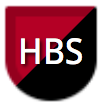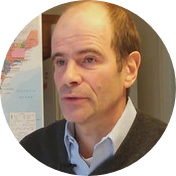Welcome back for the third in our series of posts offering analysis of the data we are receiving on MBA DecisionWire. MBA DecisionWire is a resource that allows candidates to share where they’ve decided to attend business school based on the offers they received. In this, its inaugural season, the rate of entries is ramping up as students make their final choices for the next academic year.
In the first two posts in this series, we dug into the MBA DecisionWire data to examine popular school pairings—that is, pairs of schools in which applicants who applied to one often also apply to the other. In the first, we looked at the following pairings: Stanford and Berkeley Haas, Columbia and NYU Stern, and Wharton and Chicago Booth. In the second we examined overlap between Michigan and Fuqua, Chicago Booth and Kellogg, and Stanford and Harvard.
This week we are shifting gears slightly, choosing a few individual schools to look at even more closely and examining associated application trends. Specifically, we are taking a look at applicants who applied to Harvard Business School (HBS), Dartmouth’s Tuck School of Business and UCLA Anderson School of Management to see which other schools those applicants seemed most likely to apply to as well. Understanding these groupings of schools helps provide insight into potential overlap between what the schools have to offer and why they might appeal to a particular subset of applicants.
Harvard Business School
 The Data:
The Data:
Number of overall HBS applications reported: 190
Number who also applied to Wharton: 120 (63 percent)
Number who also applied to Stanford: 93 (49 percent)
Number who also applied to Columbia: 67 (35 percent)
Number who also applied to MIT Sloan: 65 (34 percent)
Number who also applied to Kellogg: 58 (31 percent)
Number who also applied to Chicago Booth: 57 (30 percent)
Number who also applied to Berkeley Haas: 34 (18 percent)
Number who also applied to Yale SOM: 33 (17 percent)
Number who also applied to Tuck: 32 (17 percent)
Number who also applied to NYU Stern: 31 (16 percent)
Our Analysis:
It is interesting to note that the order of other schools to which HBS candidates also applied is loosely aligned with the order that these schools appear in many of the popular business school rankings.
Wharton and Stanford are significantly out in front, with the next grouping of schools comprised of Columbia, MIT Sloan, Kellogg and Chicago Booth. Together these seven schools (including Harvard) is known as the M7 group of schools.
The next group, Berkeley Haas, Yale SOM, Tuck and NYU Stern are also closely grouped together, each drawing between 31 and 34 applicants who also applied to HBS. A significant gap then exists between this grouping of schools and the next school on the list, which drew only 19 applicants who also applied to HBS.
Finally, it’s interesting to note that five applicants applied to HBS and nowhere else.
Dartmouth’s Tuck School of Business
 The Data:
The Data:
Number of overall Tuck applications reported: 88
Number who also applied to Kellogg: 41 (47 percent)
Number who also applied to HBS: 34 (39 percent)
Number who also applied to Wharton: 32 (36 percent)
Number who also applied to Michigan Ross: 27 (31 percent)
Number who also applied to Yale SOM: 26 (30 percent)
Number who also applied to Duke’s Fuqua School: 26 (30 percent)
Number who also applied to MIT Sloan: 24 (27 percent)
Number who also applied to Chicago Booth: 21 (24 percent)
Number who also applied to Cornell’s Johnson School: 21 (24 percent)
Number who also applied to UVA’s Darden School: 17 (19 percent)
Our Analysis:
With less data to work with—only 88 applicants have shared that they applied to Tuck so far—the list of schools appears to be a mix of some of the very top schools and a few of the remaining M7 schools. Notably, Columbia and Stanford were not among the top 10 schools where Tuck applicants were also likely to apply. (Thirteen Tuck applicants also applied to Columbia; 15 to Stanford.) Above these M7 schools were five from the next tier of schools—Ross, Yale, Fuqua, Johnson and Darden—most of which did not make it into the top 10 schools to which applicants to HBS were likely to also apply.
UCLA Anderson School of Management
 The Data:
The Data:
Number of overall Anderson applications reported: 71
Number who also applied to Berkeley Haas: 34 (48 percent)
Number who also applied to Kellogg: 27 (38 percent)
Number who also applied to Stanford: 23 (32 percent)
Number who also applied to Ross: 22 (31 percent)
Number who also applied to HBS: 19 (27 percent)
Number who also applied to Duke’s Fuqua School: 18 (25 percent)
Number who also applied to NYU Stern: 18 (25 percent)
Number who also applied to MIT Sloan: 17 (24 percent)
Number who also applied to Wharton: 17 (24 percent)
Number who also applied to Yale SOM: 15 (20 percent)
Our Analysis:
Berkeley Haas tops the list here for UCLA Anderson, which is not surprising given the location of the two schools. Proximity also likely plays a significant role in Stanford’s third place position. It is interesting to note that Kellogg fared well on this list, coming in at second place, and topped the list for Tuck above. The M7 schools that are absent from this list are Columbia, with 13 cross-over applications, and Chicago Booth, where only eight applicants to Anderson also applied.
While it would be premature to draw too much from this analysis, it does provide a better understanding of how applicants tend to group schools together. In this series’ next post, we will look at another three schools to see which other schools their applicants also apply to.
If you have made your final decision about where to attend business school, please add your submission to MBA DecisionWire.









